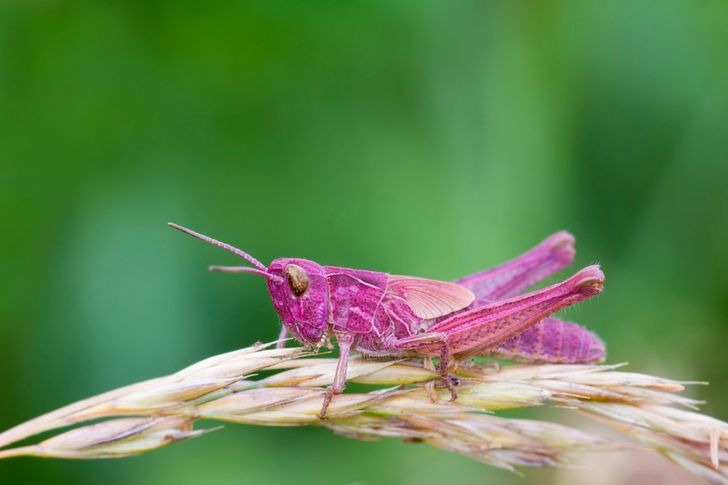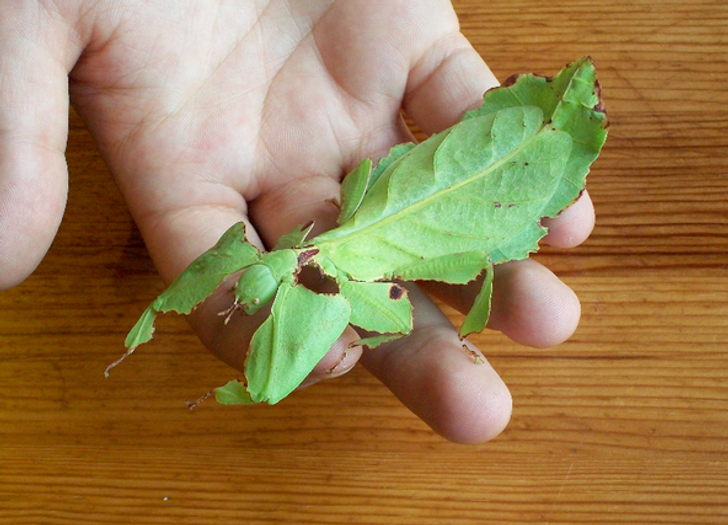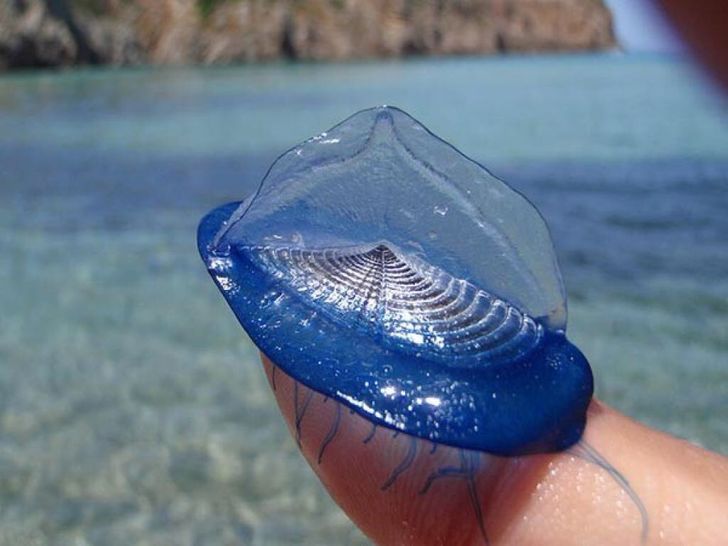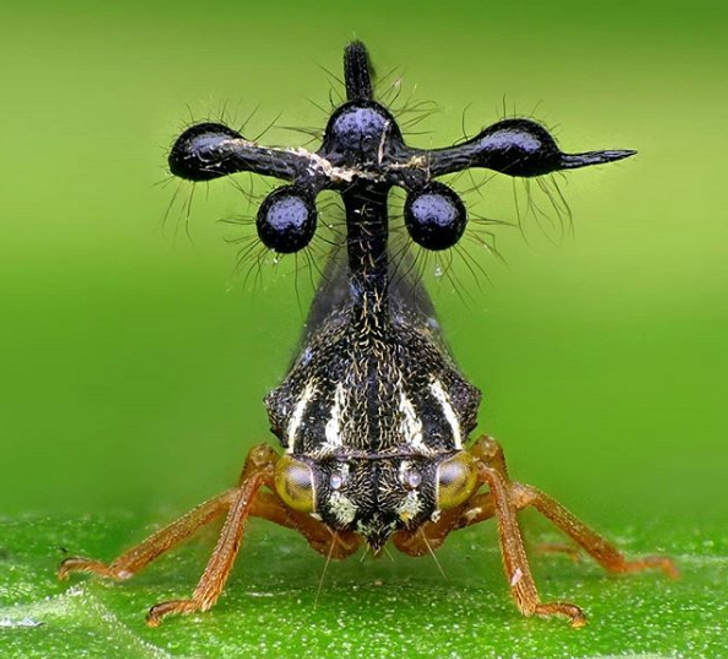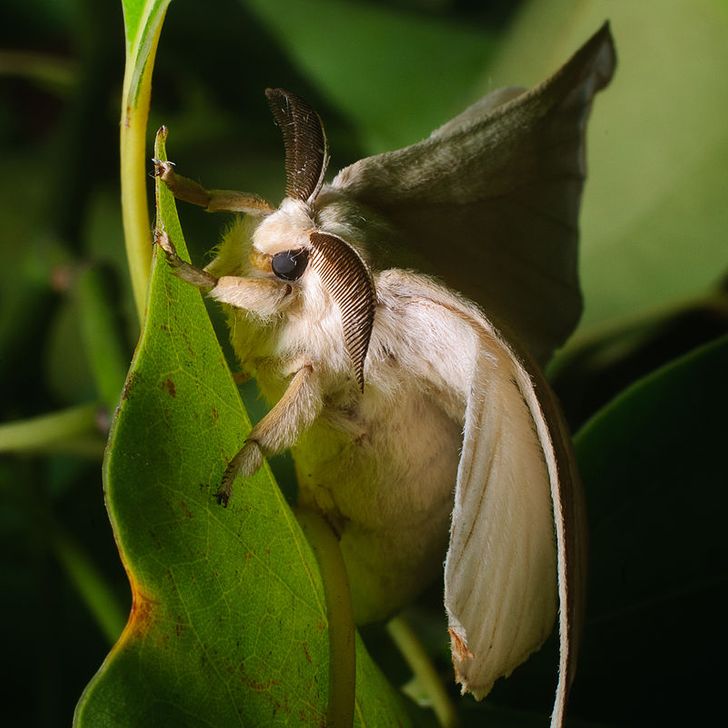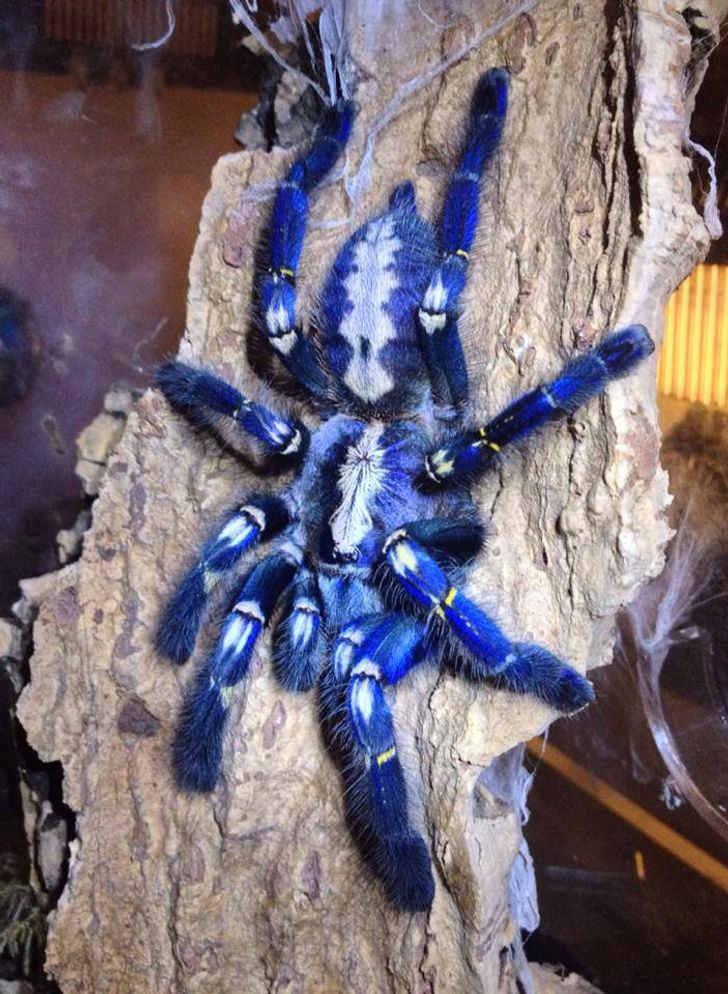That pink grasshopper is totally unbelievable ?
20+ Exotic Animals Whose Beauty Is Out of This World
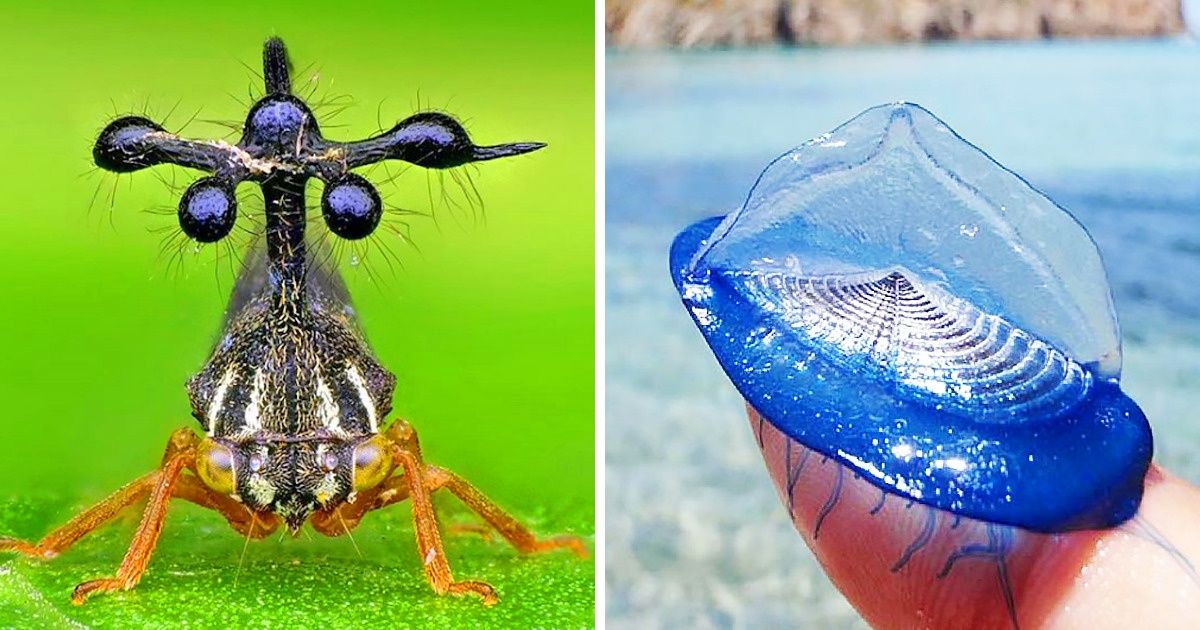
Nature has given us the privilege of having exotic and beautiful animals among us all over the world. Each of them is unique in their own way and can charm us with their strange beauty. Although some of these animals are common, some others are rare, or even critically endangered. But hopefully by creating awareness of their beauty, we can develop a friendlier relationship with nature.
That’s why, today, at Bright Side, we want to share our compilation of incredibly strange animals, including blue spiders, pink grasshoppers, and golden beetles. Some of them could even be described in fantastic fairytales. Don’t miss the bonus at the end of the article showing how a chameleon camouflages itself in Madagascar. You’ll be amazed!
1. Thorny devil
Its scientific name is Moloch horridus, but it’s better known as the Thorny devil, due to its horned scales. This lizard’s natural habitat is the scrubland and desert covering most of Central and Western Australia. They can live up to 20 years and grow up to 8.3 inches in length.
2. Sea cucumber
These marine creatures vary in form and size. There are at least 1,717 different species and they are often found in deep sea waters. Sea cucumbers can grow up to 30 tentacles in their mouths which can be pulled back inside the animal.
3. Saltamontes rosado
The first pink grasshopper was found in the 19th century. Normally green, its color comes from a genetic mutation in its reproductive cycle that creates similar effects to what we call albinism.
4. Green vine snake
Its scientific name is Oxybelis fulgidus, and you can find it in northern South America and Central America. This snake lives in trees and despite its slender shape, it can measure up to 79 in long.
5. Common flying dragon (Draco volans)
This rather small reptile is found in the Southeast Asian and South Indian rainforests. Unlike what its name suggests, the common flying dragon is unable to fly. Instead, thanks to its elongated ribs and wings, it can parachute and glide.
6. Fulgoridae or Lanternflies
Despite what the name might suggest, lanternflies actually do not emit any light. They are found in Laos, Vietnam and other parts of Southeast Asia. It belongs to the Fulgoridae genus and its scientific name is Pyrops candelaria.
7. Golden tortoise beetle
Mostly found in Southeast Asia as well, the Aspidimorpha sanctaecrucis is about 0.5 inch long. It is mostly active during the rainy season and is easily spotted thanks to its shiny golden color.
8. Common brimstone (Gonepteryx rhamni)
The greenish-yellow color is typically the characteristic of males of this species, and it changes according to the UV rays shining on it. Its female counterpart is a bit more pale. It’s mostly found across Europe, Asia, and North Africa.
9. Golden snub-nosed monkey
This primate comes from a small region of temperate mountainous forests from Central and Southwestern China. Their scientific name is Rhinopithecus roxellana and they typically measure about 21 in tall.
10. Trilobite beetle or larva
Female trilobite larvae retain a larval form as adults and are about 40–80 mm in length, hence the name. They are found in tropical rainforests in Southeast Asia and in India.
11. Colored tube anemone
This marine animal, whose scientific name is Cerianthus membranaceus, can be found in the shallow waters of the Mediterranean Sea, the northern Adriatic Sea and the northeastern Atlantic Ocean, and its northern range extends as far as Britain. They are protandrous hermaphrodites, meaning they are born male but eventually become female later in life, and on top of developing colorful membranes, they can be fluorescent.
12. Jellyfish (Thysanostoma loriferum)
This beautiful animal’s natural habitat is the ocean. Its reproduction is asexual: it liberates spermatozoids and ovules in the sea for them to meet and fertilize there. There is a considerable diversity of subspecies.
13. Walking leaf
Also known as Phylliidae, these insects have spectacular camouflage skills. Thanks to their leaf-like appearance, they can go unnoticed by their predators. They are found from South Asia to Southeast Asia to Australia.
14. Tonkin snub-nosed monkey
This snub-nosed monkey is endemic to northern Vietnam. It is also known as Dollman’s snub-nosed monkey. Unfortunately, its species is among the 25 most critically endangered primates. In 2008, less than 250 individuals were thought to exist.
15. Horned treehopper
This treehopper from Australia is found on both the North and South Islands of New Zealand. It belongs to the common treehopper family found all over the world on host plants in city gardens and parks.
16. False Malabar gliding frog
Endemic to India’s Tamil Nadu and Kerala states, this flying frog lives in tropical forests and freshwater marshes. It’s a critically endangered species and unlike its name suggests, it cannot fly, but can descend aerially, only at angles sharper than 45°.
17. Pangolin
These strange mammals coming from Asia and Africa are nocturnal animals. They are the only mammals known to have scales, which give them their very characteristic prehistorical look. They are a critically endangered species.
18. Portuguese man o’ war
This marine creature can be found in the Atlantic, Indian, and Pacific Oceans, mainly in the tropical zones. It can be blue, pink, or purple. Their long tentacles are venomous can cause skin burns and rashes, as well as a painful sting.
19. Red spiked orb weaver spider (Gasteracantha falcicornis)
This species of spider can only be found in eastern and southern Africa. The female is bigger than the male and also has a shiny, colored body decorated with many deep black pits.
20. Brazilian treehopper (Bocydium globulare)
Despite its unique helicopter-like appearance, this treehopper belongs to the Membracidae family which has a limited movement. They are typically found in Africa, North and South America, Asia, and Australia.
21. Venezuelan poodle moth
Discovered in 2009 by Kyrgyzstani zoologist Dr. Arthur Anker, this impressive moth gets its name from its strange poodle-like appearance. It is thought to be endemic to Venezuela.
22. Saiga
This critically endangered species of antelope is thought to have inhabited a vast area of the Eurasian Steppe during Antiquity. Today it’s mostly found in parts of Uzbekistan and Kazakhstan during the winter. Its big nose helps maintain its body heat during cold days.
23. Gooty sapphire ornamental
This unique tarantula is endemic to India and is a critically endangered species. Like others in its genus, it has a fractal-like pattern on its abdomen and can live up to 12 years. Its venom isn’t deadly but can cause joint pain and other side effects for up to a week.
24. Sea swallow or blue angel
Also known as the blue dragon, among other names, its scientific name is Glaucus atlanticus. It can grow up to 1.2 inches and can be found in the waters of Europe, Australia, South Africa, and Mozambique.
25. Narwhale or Narwhal
This medium-sized toothed whale’s most unique characteristic is its beautiful tusk, only present in males. It is actually its elongated upper left canine. The narwhal lives in the Arctic waters around Greenland, Canada, and Russia.
26. Lichen huntsman spider
Its scientific name is Pandercetes gracilis. This spider is one of nature’s best camouflage artists and lives in New Guinea and Australia. It ambushes its prey by hiding in moss and lichen.
Bonus: Check out how this chameleon from Madagascar changes color.
What other strange and beautiful creatures would you add to this list? Did you know of any of these animals already? Why do you think some species are more colorful than others? Let us know in the comment section and share your opinions with other readers.
Comments
Wow! Nature doesn't know about limits at all when creating this creatures
All are beautiful, but man, the golden snub-nosed monkey just stole my heart!
Can't believe these animals even exist! I mean, the saiga???? Unbelievable
Related Reads
My Ex Put His New Family Over Our Son, So I Served Him the Sweetest Revenge

18 Stories That Prove a Cleaner’s Job Is About More Than Just Dusting

I Absolutely Refuse to Tolerate My DIL’s Laziness, My Son Deserves a Wife, Not a Freeloader

15 Fitting Room Stories That Can Make You See Shopping in a Whole New Light

My Husband Made Me Care for His Sick Mother, So I Served a Payback He Won’t Forget

10 Parents Whose Quiet Kindness Spoke Louder Than Words

I Refuse to Let My Father’s Secret Love Child Steal My Inheritance

I Refuse to Let the Former Owner Get Married in My Backyard—My Kindness Stops Here

I Was Excluded From a “Family” Dinner—My Revenge Taught My DIL a Lesson

11 True Stories That Prove Real Life Doesn’t Need a Screenplay

13 Times People Accidentally Uncovered Someone’s Biggest Secret

13 Times Babysitting Jobs Took an Unexpected and Emotional Twist

